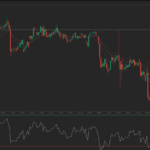Having found support close to the 23.6% Fibonacci level (1.1034), reflecting the sharp descent from June 24th high to June 24th low, EUR/USD managed to trim losses and traded within the 1.1055-1.1075 range at the start of the US session on Wednesday. Near-term resistance may be encountered at the weekly Pivot Point/hourly 55-period Exponential Moving Average (1.1092/1.1094). On the other hand, a move below the 23.6% Fibonacci may target the low from June 27th (1.0968).
Goldman Sachs revised down its EUR/USD forecast to 1.08 in a period of 3 months (1.12 previously), 1.04 in a period of 6 months (1.10 previously) and 1.00 in a period of 12 months (1.05 previously).
After tumbling to fresh 31-year low of 1.2797 in Asia, GBP/USD is now in consolidation mode around the hourly 21-period Exponential Moving Average (1.2979), with 1.3000 serving as a near-term level of resistance. If breached, the next resistance levels sit at 1.3068 (weekly S1 pivot) and 1.3088 (hourly 55-period EMA). Near-term support sits at 1.2870 (the weekly S2 pivot) and after that – at 1.2797 (intraday low).
Having registered an intraday low of 1.2965 during the early phase of the European trading session on Wednesday, USD/CAD bounced back above the 1.3000 mark to trade at 1.3025-1.3040 in early US trade. Near-term resistance sits at 1.3050 (the monthly R2 pivot), then – 1.3068 (the weekly R1 pivot) and 1.3087 (the monthly R3 pivot).
The United States reported an increase in its total trade deficit in May, with the gap reaching USD 41.14 billion, following a revised down deficit of USD 37.38 billion in the preceding month. At the same time, Canadas total trade deficit shrank at a lesser rate than anticipated in May, reaching CAD 3.28 billion, from CAD 3.32 billion in April.
Gold futures for delivery in August continued their advance and hit a fresh 27-month high at $1.377.45 per troy ounce in early US trade. Near-term resistance sits at $1,384.20/$1,386.03 (the weekly R3 pivot/the monthly R1 pivot) and then – at $1,391.40 per troy ounce (the high from March 17th 2014). On the other hand, the hourly 21-period EMA ($1,364.85) may serve as an immediate support.





